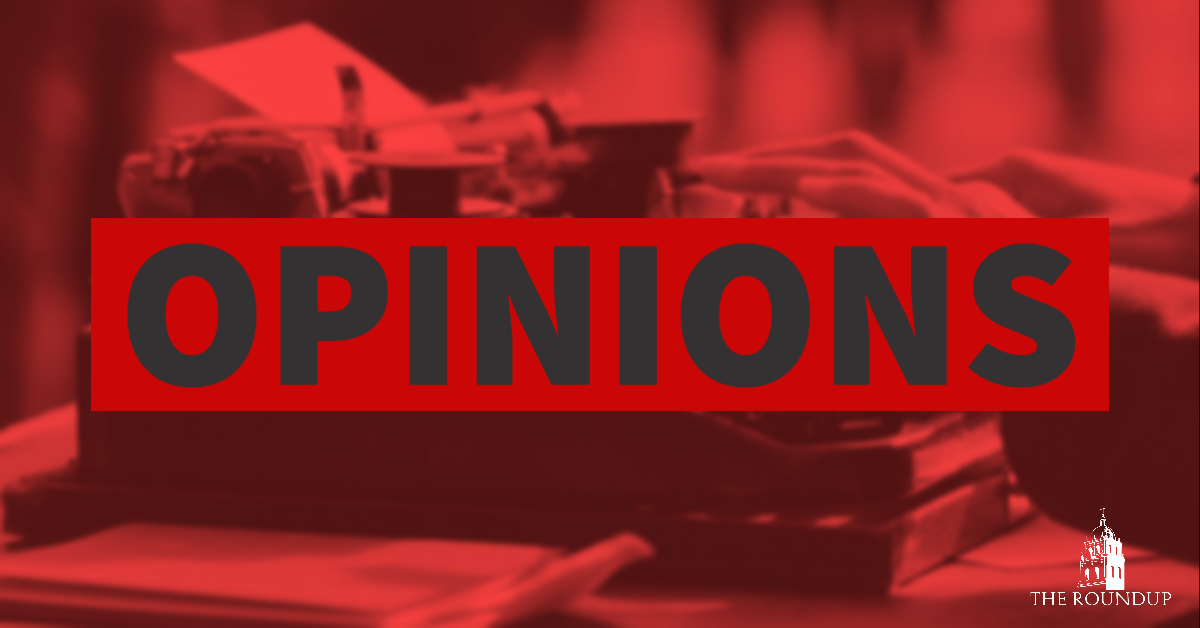
Illustration by Camden Andl ’19 | A hypebeast stands atop a pile of clothes, sporting many popular hypebeast brands.
By Camden Andl ’19
THE ROUNDUP
The word hypebeast is a slang term to describe someone who obsessively purchases products and releases from “hyped” brands.
Hypebeasts often do not care what an article of clothing looks like, as long as the “hyped” brand’s logo is clearly shown. Many spend unnecessarily large amounts of money on these pieces simply to show off to their friends or on social media.
Money has always been a leading factor in the fashion industry. Although thrift shopping for cheap, vintage clothing is popular among high schoolers, the fashion industry is all about high end fabrics, cuts and especially brands. I totally see why this is—the better quality the clothing, the more expensive and appreciated it should be.
However, the amount of money hypebeasts spend on their clothing is truly ridiculous. Supreme, arguably the biggest hypebeast brand, is often seen as one of the biggest offenders of overpriced clothing.
A plain white t-shirt with the Supreme box logo or “bogo” on the chest can cost around $40-45 retail. Why would anyone buy a t-shirt with a screen printed rectangle for that much money? The answer, obviously, lies in the branding.
Some of the largest hypebeast brands other than Supreme include companies like Gucci, Balenciaga, Off-White, Palace, Vetements, Louis Vuitton and Bathing Ape.
Companies like Nike and Adidas can also be considered hypebeast although they have long been prominent in the sports and streetwear worlds.
With the ever increasing influence of social media, the fashion industry has turned from a tabloid page to smart phone screen. This has allowed for new looks and styles of clothing to reach exponentially more people than in previous decades.
According to Business Insider, 90% of the approximately 150 million Instagram users are under 35 years old. This means that the majority of Instagram users are young adults and teenagers, influenced by the fashion they see on their screens every day.
The HYPEBEAST Magazine Instagram page has 5.4 million followers alone. This does not account for the countless individual Instagram hypebeasts and their followers. Instagram is not strictly a fashion service, but many of the posts—from selfies to advertisement—are focused on fashion. Even if you don’t follow Instagram hypebeasts, you can’t escape them and today’s popular fashion.
To prove my point, I scrolled down on my explore page four times, and came across a picture of popular Instagram hypebeast @gullyguyleo that shows the prices of what he’s wearing in the photo: a vintage Prada jacket for around $280 and Louis Vuitton Supreme collaboration sneakers for $1,500.
The fact that people actually spend this much money on these clothes blows my mind. You can go into a Nordstrom Rack or even a Ross and find a piece of clothing of almost as good quality, if not better, for a fraction of the steep hypebeast prices.
Sophomore Dhilan Patel ’20 is very into fashion. He often wears popular streetwear brands, sometimes including hypebeast apparel. However, because he is wiser with his money, he doesn’t consider himself a hypebeast.
“I don’t go around spending all of my money on Balenciaga or Vetements—it’s so expensive I couldn’t justify buying them for myself,” Patel said. “I spend a lot of time looking at their stuff, but I always end up going and buying things that are on sale or things I think look cool.”
Patel said that fashion really depends on how you wear the pieces more than the brand.
“If you’re just wearing all Supreme everything—you don’t know what the culture is and you just buy it because it’s hype—that’s the real definition of a hypebeast,” he said.
Unlike Patel, Bryan Gerkensmeyer ’20 thinks hypebeast culture is important. “It gives [teenagers] something to do,” he said. “Some of us can’t drive or go out much, so all we do is just sit at home and order clothes off the internet. You’re not just going to buy random clothes—people want higher brands—that’s what you’re saving your money for. If you look cool, it’s fun.”
But although Gerkensmeyer supports hypebeast culture, he admits that the financial aspect is flawed.
“Balenciaga’s production is moving from Italy to China and they’re still going to charge $800 retail,” he said. “I feel like these companies are putting their name on the clothes and are charging four times as much as than they actually are worth.”
Personally, I enjoy looking at some of the hypebeast styles and brands from time to time. I think the current streetwear trend is new and exciting—it’s blending the styles of everyday people from cultures from all around the world into a look that can be appreciated by the new and old generations alike. However, I strongly disagree with how much these companies are charging just for someone to own a sweatshirt or sneakers with their logo on it.
I think that big hypebeast brands detract from true fashion—fashion is not determined by the brand or the price, it’s how you style and wear the clothes you do and the confidence you can draw from liking how you look. Sure, someone can feel confident in their clothes because the brand is currently in style, or feel good about wearing an expensive piece they saved their hard-earned money for, but the financial levels hypebeasts go to to show off is disappointing.
At the end of the day, wear what you want to wear—spend your money how you want to spend it and be proud of what clothes you have on, whether you can afford expensive ones or not. But don’t get caught up in how other people see you—fashion is for you.


















